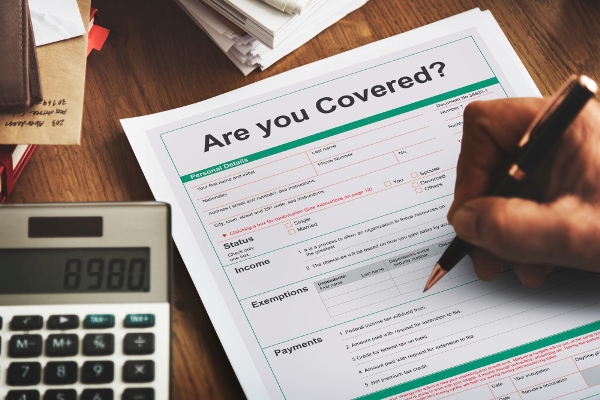Hurricane Ian mercilessly barreled through Florida as a Category 4 storm with 150 mph sustained winds. The intense winds and floods spurred by record-breaking rainfall flattened and submerged thousands of homes. Although Florida is no stranger to hurricanes, this monumental storm is quickly shaping up to be one of the worst in the state’s history. Many Floridians and inhabitants of other hurricane-vulnerable states are likely well acquainted with their homeowners insurance covers. Whether you are in Florida or another state prone to hurricanes, Hurricane Ian serves as an urgent reminder to check your insurance coverage for natural disasters.
Hurricanes Responsible for Billions in Property Damage Annually
Hurricanes are the most powerful and destructive storms on the planet. Between 2017 and 2021, hurricanes accounted for over $36.1 billion in damages in property damage in the United States. Residential structures like apartment complexes, condos, houses, and mobile homes can rapidly crumble during a hurricane. The storm’s powerful winds can tear down or rip apart a structure. According to the Saffir-Simpson Hurricane Wind Scale, any category hurricane, from 1 to 5, can damage homes. However, each category produces varying degrees of damage, for example:
- Category 1 – Well-constructed frame homes could have damage to the roof, shingles, vinyl siding, and gutters
- Category 2 – Well-constructed frame homes could sustain major roof and siding damage
- Category 3 – Well-built framed homes may incur major damage or removal of roof decking, and gable ends
- Category 4 – Well-built framed homes can sustain severe damage with loss of most of the roof structure and/or some exterior walls
- Category 5 – A high percentage of framed homes will be destroyed, with total roof failure and wall collapse
The roof, interior, equipment, utilities, and exterior of your home are all at risk during a hurricane. Therefore, you must ensure you have adequate homeowners insurance to cover the damages.
Examine Your Hurricane Deductible
Many weather-related events, like lightning and hail, fall under the standard policy of your homeowners insurance. However, states more susceptible to hurricanes or tornadoes require your policy to have a separate deductible. A hurricane deductible is often higher than standard homeowners insurance. It usually ranges from 1% to 5% of your dwelling coverage. Your dwelling coverage accounts for the structure of your home, your roof, attached structures, and built-in appliances like your water heater. So, if your dwelling coverage is $400,000 and your hurricane deductible is 5%, you may be responsible for $20,000. Although this sounds very costly, a hurricane deductible is necessary if you live in a state at risk of hurricanes. States that have a hurricane deductible are:
- Alabama
- Connecticut
- Delaware
- Florida
- Georgia
- Hawaii
- Louisiana
- Maine
- Maryland
- Massachusetts
- Mississippi
- New Jersey
- New York
- North Carolina
- Pennsylvania
- Rhode Island
- South Carolina
- Texas
- Virginia
Also, Washington D.C. has hurricane deductibles.
Additional Coverage Needed for Hurricanes
While powerful winds are a major concern, flooding is also an unavoidable detriment to your home during a hurricane. Many parts of Florida experienced nearly 12-foot tall storm surges and record-breaking rainfall that unleashed massive floods on the state during Hurricane Ian. This flooding quickly engulfed homes and businesses, leaving many homeowners with houses inundated with water damage. Shockingly, just one inch of water can result in $25,000 in damage. Yet, many homeowners overlook obtaining flood damage. If you live in a high-risk flood zone, your lender most likely mandates that you have flood protection. But, it is surprising to learn that people who live outside high-risk areas file more than 25% of flood claims nationwide.
You can secure flood insurance through a private insurer or a federal program like the National Flood Insurance Program. In most circumstances, there is a 30-day waiting period before your insurance takes effect under NFIP, so you should act proactively rather than reactively with flood coverage.
In addition to flood insurance, consider water backup coverage which pays for sewage overflow caused by flooding.
What Should I Do if I Live in a Condo or Apartment?
Homeowners insurance and renters insurance are two entirely different scenarios. Your landlord is responsible for insuring the building if you live in an apartment complex. That said, you still need to cover your own possessions through personal property coverage. Furthermore, you will have to carry insurance for additional living expenses. Oftentimes, hurricanes temporarily displace individuals. If you live in an apartment, consider an insurance policy that covers living expenses such as hotels or food since you cannot live or cook at home.
Check with your association about what is covered if you live in a condo. Before you seek out insurance coverage, speak with the property management company or your association to find out what additional insurance you may need. Unlike an apartment, in some cases, you have to pitch in for repairs to your condo after a hurricane.

